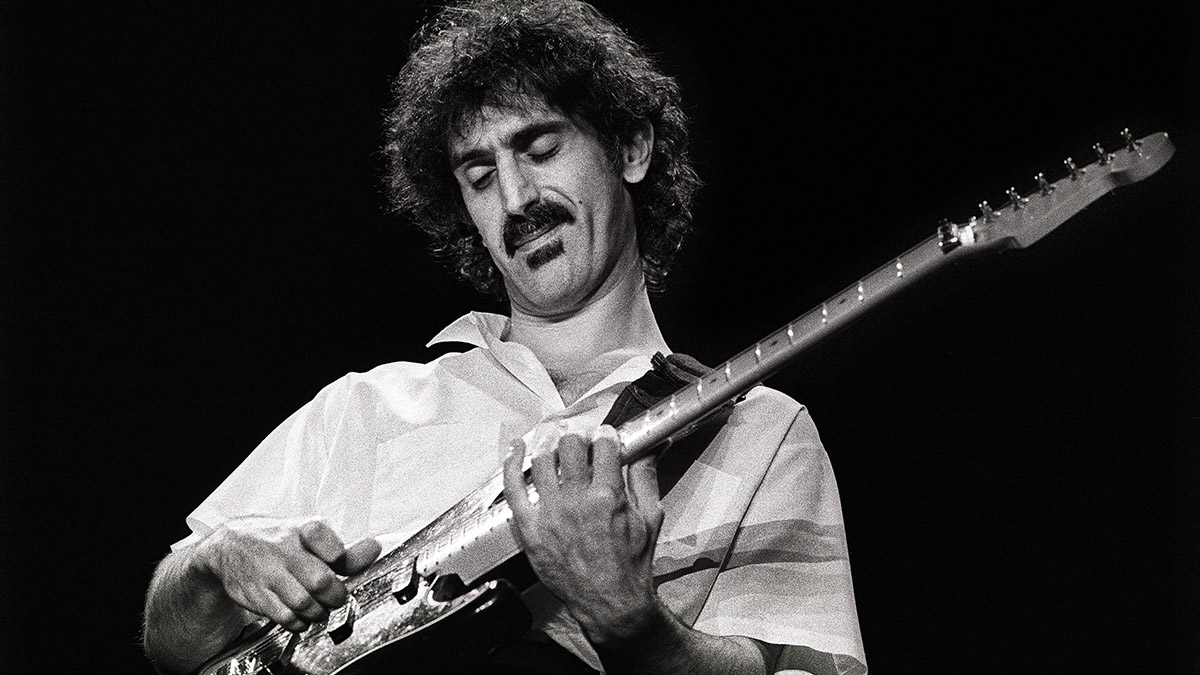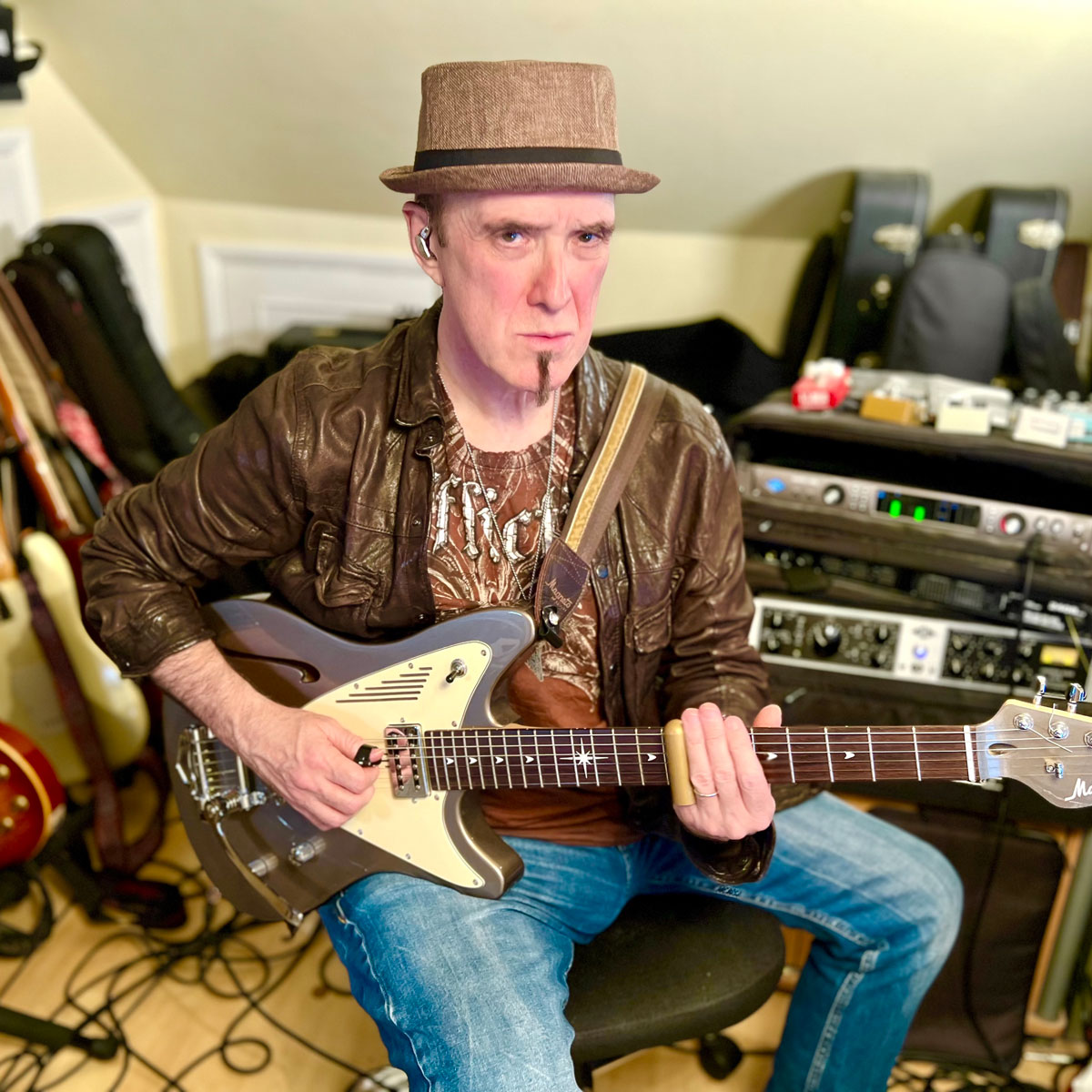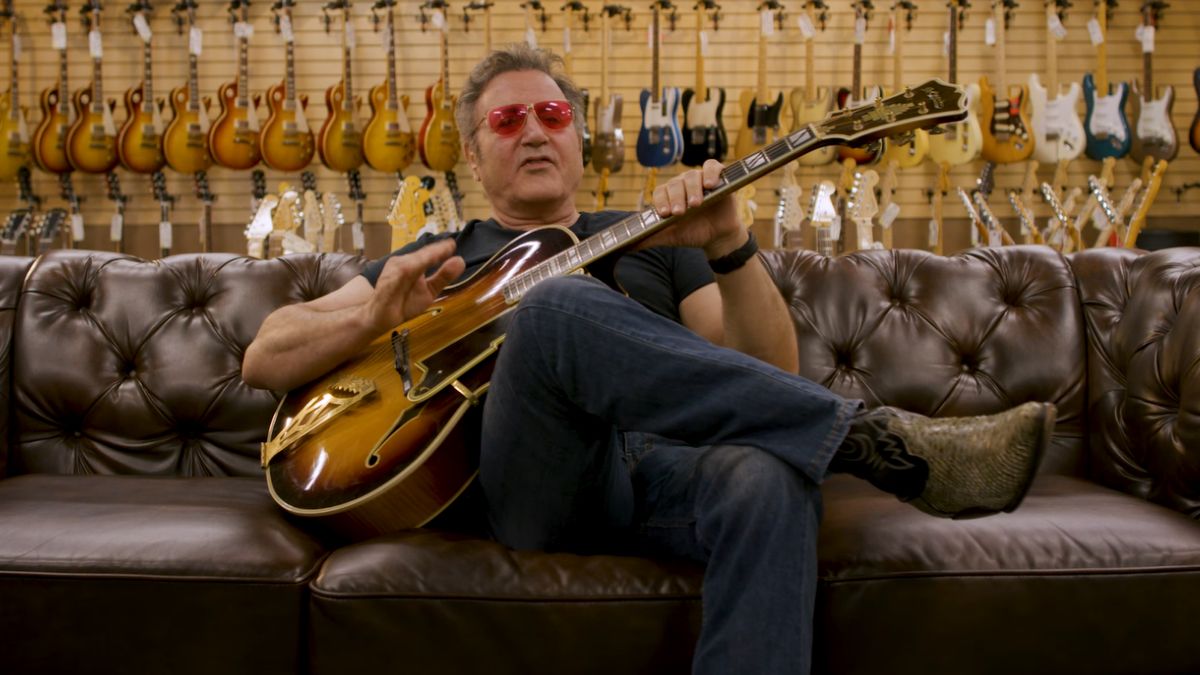How to solo using compound time – the secret behind some of Frank Zappa and Robben Ford's most out-there leads
Open up some all-new possibilities for your lead strategies with these fresh rhythmic soloing approaches

Compound time is where the beats are subdivided into groups of three or six – for instance in 6/8 or 12/8. If you’re a blues-rock type of player, the most familiar use of compound time might be in a slow 12/8 blues or a shuffle.
It’s common for soloists to use even subdivisions of the beat to float over the pulse. These also add greater rhythmic variety to the palette of rhythms that we as soloists can call upon. Fantastic exponents of compound time range from Frank Zappa to Robben Ford.
We’ll start by exploring the pulse of these time signatures. When you start experimenting you should aim to find various rhythms within the pulse. Our first example shows some options beyond just playing a swing ‘crotchet to quaver’ rhythm. Once the feel is internalised, we’ll show the even subdivision of the beat in groups of two and four, exploring lines that exploit this.
Example 2 starts with a line based on the minor pentatonic, so that the notes used are completely familiar. Just running a stream of groups of four is exactly the same as treating the pulse as 4/4 (or 3/4, etc) but with the underlying pulse proceeding with three-note subdivisions.
Robben Ford’s killer solo on Misdirected Blues from his Mystic Mile album has a near iconic line based on the four-note subdivision of the beat over a 12/8 pulse. Ford’s command of harmony is vital to making such a strong statement over the sequence. Using inspiration from that solo, this line navigates the chord tones of C7 with a few approach note techniques.
After this, we’ll experiment with using the underlying three-note subdivision of the beat in combination with even subdivisions.
These two types of subdivisions have a very different feel. In four-note subdivisions it’s easier to land chord tones on the beat in flowing lines, and you’ll often hear this in jazz-influenced playing, like that of Ford.
Whatever style you’re into, it’s always vital to listen closely to the great players. Keep your ears open for what kind of scales are used, where chord tones fall with regard to the beat, and how they are targeted. Even players like Clapton and Stevie Ray Vaughan who play mainly pentatonic-based solos, still cleverly target the chord tones, which is why they manage to sound so musical.
Remember the use of space within rhythms is important. So take a breath now and again when phrasing. Great improvisers say that their sense of phrasing is inspired by the best singers. Why not do the same?
Get the tone
Amp Settings: Gain 6, Bass 6, Middle 4, Treble 6, Reverb 3
While Frank Zappa used mainly Gibson-style guitars, any electric will work fine here. A classy overdrive pedal in front of a warm sounding American style guitar amp should make these ideas sound authentic. And as the lines aren’t all that fast, a well chosen delay setting shouldn’t obscure the note detail. Add a splash of reverb for a fuller, and more pleasing tone.
Example 1. Subdivisions in 12/8
Our first idea shows beat subdivisions in 12/8 time – three quaver notes make up the dotted crochet main beats. The use of rests can create interesting rhythms.
Example 2. Even subdivisons over uneven ones
Here we have even subdivisions of two and four notes per beat; listen to the audio to understand what’s happening, then duplicate the notes yourself.
Example 3. Even subdivisions over 12/8
This line shows how the even subdivisions of 4 can be used over the 12/8 pulse. It makes for a very unique sound, creating tension over the underlying triplet feel.
Example 4. Chord tones on the beat
This flowing country rock/jazz blues line aims at landing strong chord tones like E and Bb notes (3rd and b7 of the C7 chord) in bar 2 on the beat.
Example 5. Mixing up the subdivisions
Here we mix up the three-note subdivision with the superimposed two and four-note subdivisions to add greater variety to the lines. It’s a freely organic sound.
Example 6. Alternating subdivision types
This example does the same but alternates whole bars of three and four-note subdivisions.
Get The Pick Newsletter
All the latest guitar news, interviews, lessons, reviews, deals and more, direct to your inbox!
A professional guitarist for many years, Andy G Jones has played with Van Morrison, James Ingram, Lamont Dozier, Queen (Brian May and Roger Taylor), Robben Ford, Billy Cobham, John Illsley (Dire Straits), KT Tunstall, Albert Lee (featured on Andy's upcoming CD), Mike Finnigan, Dave Landreth and Ryan Voth from The Bros. Landreth, Malford Milligan, The BBC Radio Big Band, Patti Austin, Hamish Stuart (Average White Band), Lalo Schifrin (Hollywood film composer Bullitt, Mission Impossible), Hank Marvin, James Dean Bradfield (the Manic Street Preachers), Grady Tate, Agnetha from ABBA, Cliff Richard, Dudley Moore, Nathan James (Inglorious), Joey Tempest (Europe) and Kelsey Grammar.











